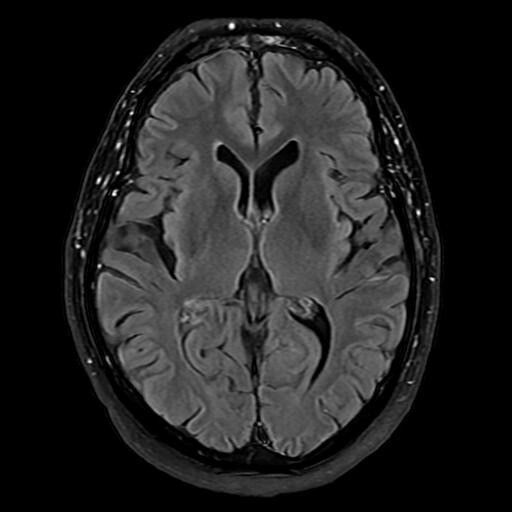I’m Pär Krasterman, CTO and co-founder of Collective Minds Radiology and I interact with the Medical AI industry almost daily through my day-to-day work. What are in my opinion Medical AI’s largest hurdles? Well, it’s not to build spectacular new algorithms that really become a fantastic new hammer in the modern radiologist’s toolbox. Nor is it to clear the novel technology for clinical use, even if we all know that it’s hard work and a lot of documentation overhead. It’s specifically not these topics, because the processes behind them are in my engineering jargon “industrialized” and “commoditized”. There is a clear recipe from the start, add the ingredients and effort and you will get the outcome.
To me, the largest struggle today is the human side of AI. Adoption, trust, explainability, and more. For these processes, there is really not a good industrialized recipe to follow (Or is there? do I have a card up my sleeve?). Do continue reading and let’s see…
Imagine the following. Medical Imaging AI Company X (MIAICX – a sufficiently weird acronym to fit the industry) is approaching hospitals with their brand-spanking new MIAICX-1. And it does wonders! The sales pitch is great, the demo cases really shine and everyone in the room feels that this is worth a deeper look. Now, this is where the trouble starts. For any hospital to take the next logical step, we run into enormous hurdles when the following two requests are put on the table by one of the medical doctors.
1. I want to try MIAICX-1 for myself and run a few of my own cases through it to see if I agree with its output. Can explain what’s happening and do I find it useful in my clinical practice?
2. Before taking any purchasing decision, I want to independently prove the performance of MIAICX-1 on my population (not based on polished marketing content), something absolutely necessary when building up my case for the purchasing request and when asked by the hospital board in general.
To achieve these two items, I can guarantee that you will get stuck on:
- The legal framework for transferring patient images for testing purposes of MIAICX-1, which needs to be studied, updated, and approved by your hospital legal department which by the way is understaffed already.
- The pseudonymization protocol to be used will satisfy the lawyers above yet still keep sufficient data for processing. And yes, it’s pseudonymization, a term invented by GDPR which is skyrocketing the search trends in the twilight zone between privacy law and medical data.
- The IT security setup guarantees that MIAICX needs to prove itself being worthy of, basically by being audited by the hospital IT guru or even worse, the regional equivalent.
All of the above, to test-run just one engine MIAICX-1, will in the best of worlds take you 6-9 months to achieve with radiologists, IT staff, and lawyers involved. None of them feel that this is a good use of their time. And god forbid that the outcome of all of this effort is a conclusion that MIAICX-1 is not the right choice for us.
Ok, I’ll be honest, I did have a card up my sleeve. This is where Collective Minds Clinical and Collective Minds Research come into play. As a remedy to the above, we propose the following:
- Start by exploring the 10,000+ strong Collective Minds Clinical radiology community at cmrad.com and especially check out the #AIShowCase tag. Feel free to get yourself invited to a few demo groups owned by MIAICX and others. Start immediately to play around with the engines by reviewing other real-life cases or submitting your own for processing. It’s a 5-minute job.
- Run a small sample set of your own tricky cases and ask the AI bot what it thinks. Does it agree with you? Let the community know what you think and listen to the opinions of other doctors in your same shoes, anywhere in the world. And, if you have any issues with understanding the AI bot’s output, just ask MIAIXC clinical support team for explanations, right there and then in your case, shared with the other group members.
Are you still happy with your gut feeling? Great, don’t stop here. Head over to Collective Minds Research and set up your own AI validation study on your own selection of patients or go crazy and build it to population size (We’ve done up to half a million subjects so far, if you have something larger in mind, call us, we’d love the challenge). The research project will provide you with black-and-white data on the clinical performance of the studied algorithm, versus your current clinical baseline or versus other AIs. You choose.
The neat thing is that all of those big hurdles I talked about earlier were already overcome by Collective Minds. These topics were part of the guiding star when the solution was built and it’s one of our great pride to be able to offer this extraordinary simplification as a service.
Sounds too good to be true? Come see for yourself. Basic collaboration accounts with access to #AIShowCase and AI test groups are free of charge for any healthcare professional, simply by heading over to cmrad.com. If you would like to take your AI journey further, send us a note. We’d love to help. Why not let Collective Minds become your Medical Imaging AI Strategy?
Pär Kragsterman, CTO & Co-founder, Collective Minds Radiology
Stay updated with all Collective Minds Radiology news here: https://about.cmrad.com/news-and-events/



